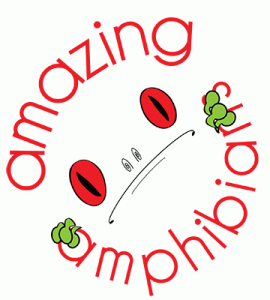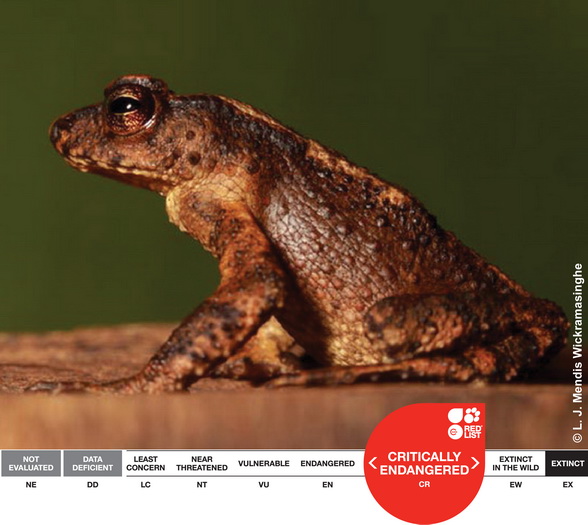 The Sri Lankan Kandyan Dwarf Toad, Adenomus kandianus, is one of the rarest toads in the world. This dwarf toad was first discovered in 1872 and last seen in 1876. Thought to be extinct for more than a century, it was rediscovered in 2009 in the Peak Wilderness Sanctuary on the island of Sri Lanka. About 100 individuals were discovered over the course of a two-year study in the region. This toad is now listed in IUCN Redlist of Threatened SpeciesTM as ‘Critically Endangered’.
The Sri Lankan Kandyan Dwarf Toad, Adenomus kandianus, is one of the rarest toads in the world. This dwarf toad was first discovered in 1872 and last seen in 1876. Thought to be extinct for more than a century, it was rediscovered in 2009 in the Peak Wilderness Sanctuary on the island of Sri Lanka. About 100 individuals were discovered over the course of a two-year study in the region. This toad is now listed in IUCN Redlist of Threatened SpeciesTM as ‘Critically Endangered’.
 |
The Sri Lankan Kandyan Dwarf Toad has a yellowish belly and body skin covered with small tubercles. Endemic to Sri Lanka, it is only known to occur in one single site in the Peak Wilderness Sanctuary. Although its scientific name suggests that it might be first collected near the city of Kandy in Central Sri Lanka, all of the Central Province was referred to as Kandy in the late 19th century when this species was first described. This toad is a stream-dwelling species that occurs in montane cloud forest. It can be found at night on rocks of river banks and presumably has a larval stage that develops in water.
The population of Sri Lankan Kandyan Dwarf Toads is in decline and continues to be threatened by pollution and illegal deforestation for tea plantations. Its breeding habitat is under threat as streams are being blocked or diverted due to human activities. Improved conservation management inside the sanctuary is urgently needed to protect this species.
Submit your observations of this species to iNaturalist and they will appear on this map. Learn more about this species on Amphibiaweb.
More Amazing Amphibians here.
Produced in partnership with:
Senior Partners |
|||
 |
 |
 |
|
 |
|||
Focal Partners |
|
 |
|
Affiliates |
|||
 |
 |
||
 |
|||
How to become an Amazing Amphibians partner:
Outlined below are the roles and responsibilities for the 4 different levels of involvement for potential partners. If your organization would like to be a part of the Amazing Amphibians program in either of these capacities please email amazing@amphibians.org.
Senior Partner – These partners will help with multiple aspects of the program, help facilitate the completion of several species profiles, publicize each Amazing Amphibian and will likely have a landing page for the program on their website. This level of partner will be leading in using their communication channels to gather additional information for the program such as images and data points for iNaturalist.
Strategic Partner – These partners will play an active role in creating species profiles, submitting at least three species profiles per year and actively use their social network to publicize each Amazing Amphibian. This level of partner will be active in using their communication channels to gather additional information for the program such as images and data points for iNaturalist.
Focal Partner – Partners tend to be active in a limited geographic area. This partner will submit at least one regional species profile per year and use their social network to publicize each Amazing Amphibian. This level of partner will be involved in using their communication channels to gather additional information at a regional level for the program such as images and data points for iNaturalist.
Affiliate – These partners are interested in promoting the program but might not be in a position to provide profiles. These partners will publicize each Amazing Amphibian through the social media outlets.







